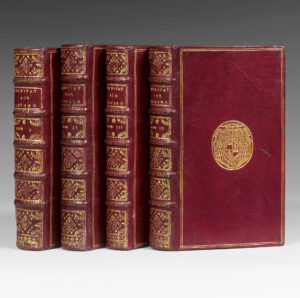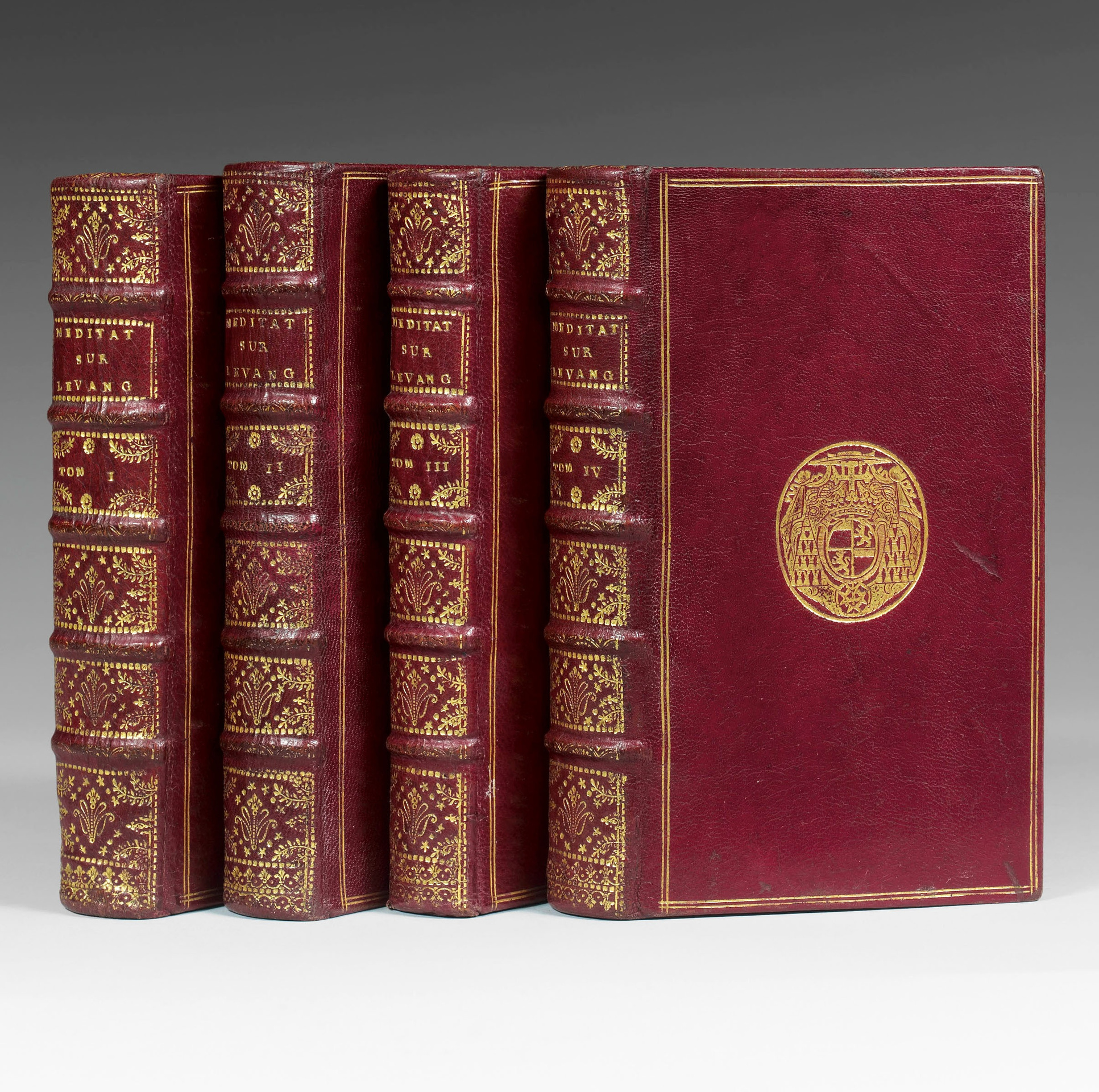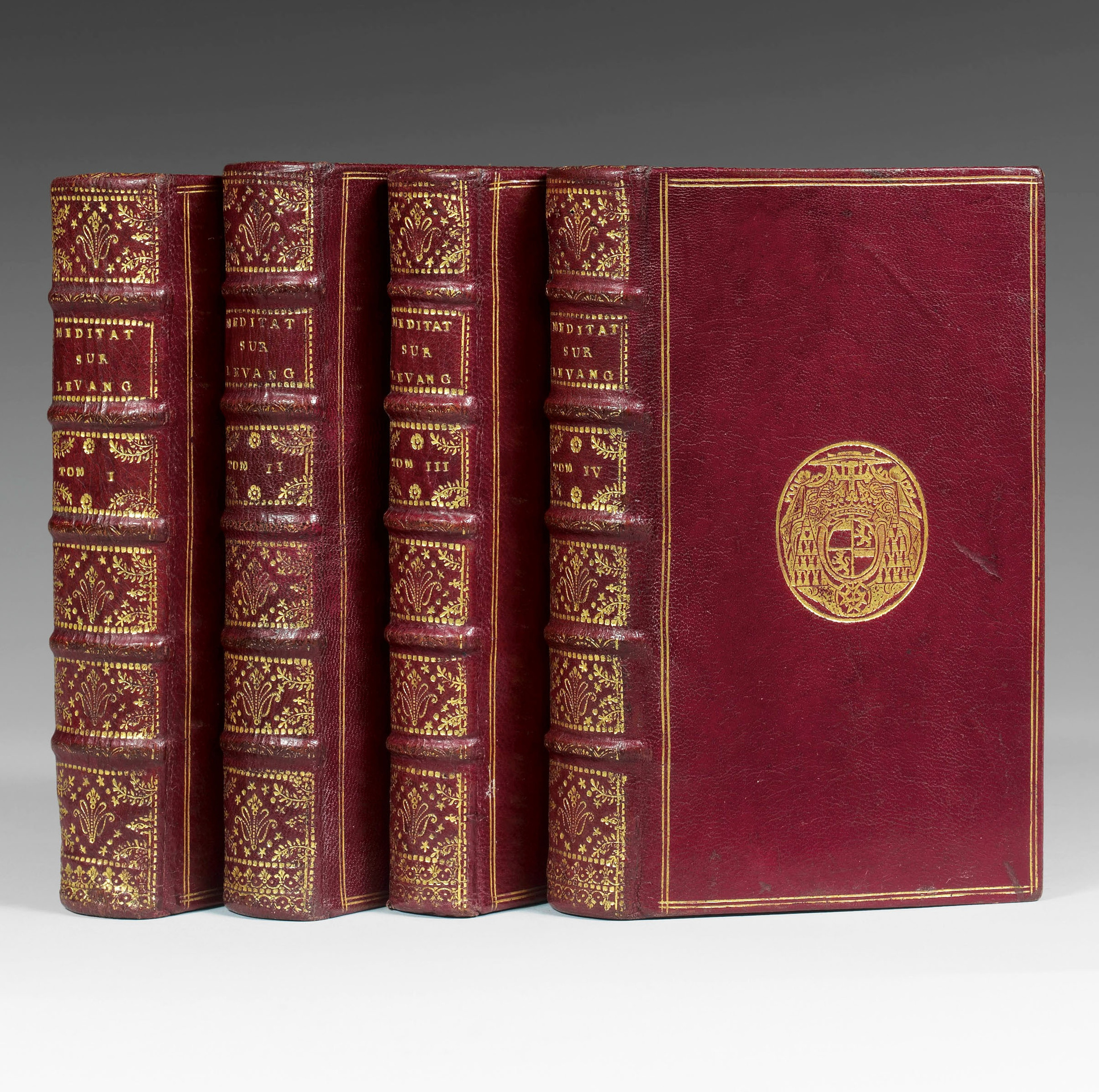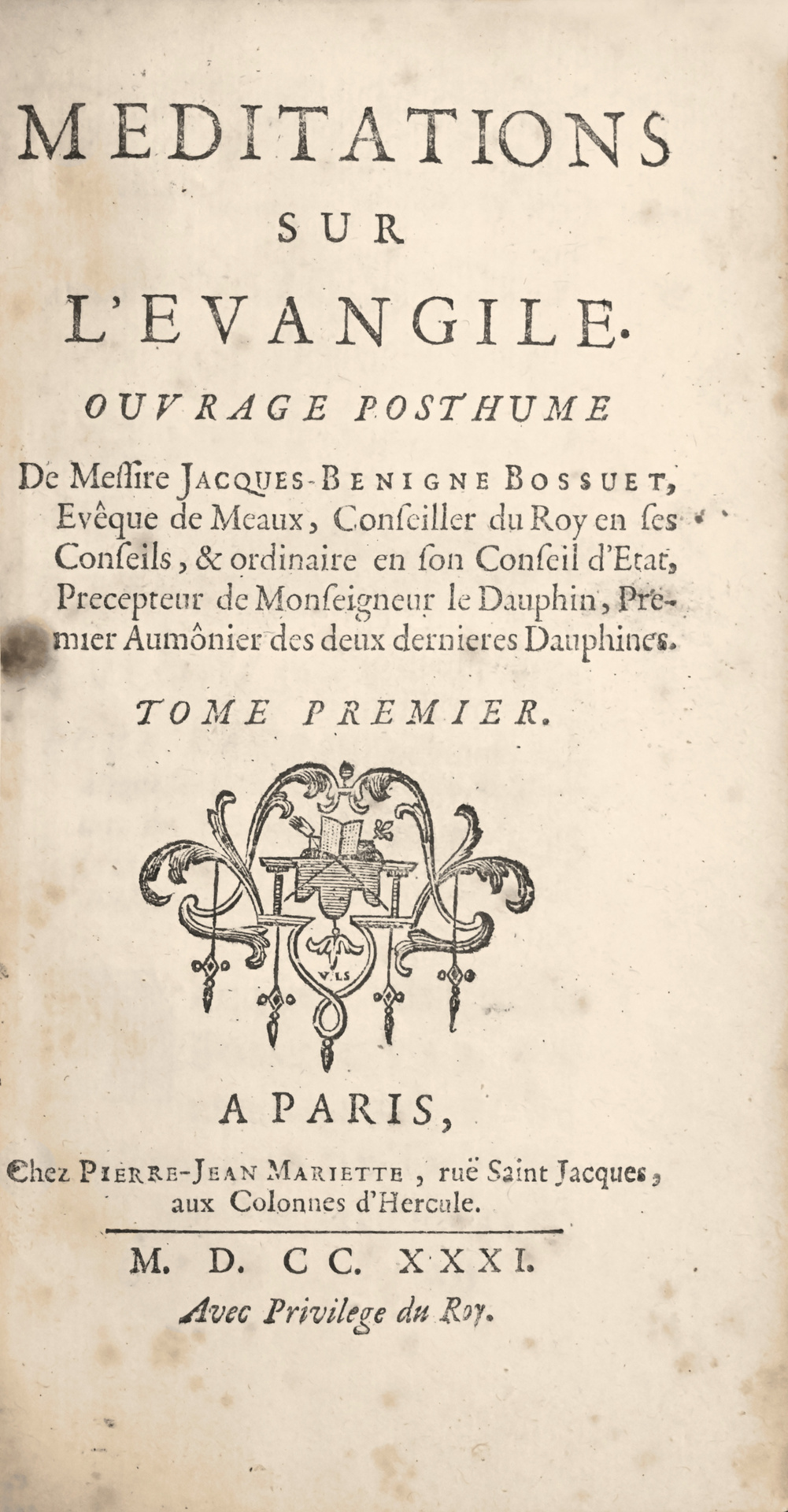Paris, Pierre-Jên Mariette, 1730-1731.
4 volumes 12mo [163 x 90 mm] of: I/ (1) bl.l., 63 pp., (17), 519 pp., (1) bl.l.; II/ (1) bl.l., (1) l., 464 pp., (6) ll., (1) bl.l.; III/ (1) bl.l., (2) ll., 454 pp., (8), (1) bl.l.; IV/ (1) bl.l., (2) ll., 506 pp., (18), (1) bl.l.
Bound in contemporary red full morocco, double gilt fillet around the covers, arms gilt-stamped in the centre, spines ribbed and richly decorated, gilt inner border, gilt edges. Contemporary binding.
First edition, published posthumously, of the Méditations sur l’Evangile by Jacques-Bénigne Bossuet, bishop of Mêux (1627-1704), composed and addressed to the nuns from the visitation of Mêux in 1695.
Tchemerzine, I, 904; Picot, Catalogue Rothschild, 68; Bibliothèque Rahir, n°982; Catalogue du Baron Pichon, n°70; Brunet, I, 1139.
“Bossuet called them at the time ‘Réflexions sur l’Evangile’; it is his nephew, the abbot Bossuet, who gave this first edition, posthumously, under the title of ‘Méditations’, in 1730-1731.
The Meditations are part of a group of devotional works which includes l’Elévation à Dieu sur tous les mystères de la religion chrétienne 1695, and the Traité de la concupiscence, 1694. Those works mark the time of Bossuet’s life when he retires from the world and dedicates himself to his pastoral task. His mind also retired in itself, he rêlized he stalled for too long with the century and he feels the need to find again in their own purity, the texts of faith. The Meditations are a commentary followed with words pronounced by Christ, considered as forming a unique Discourse, which starts from the beginning of his public life until his dêth; hence come the sub-titles of the work: ‘Sermon ou Discours de Notre-Seigneur depuis le dimanche des Ramêux jusqu’à la Cène’.
Those chronological divisions are subdivided themselves in days, which form, êch, a separate meditation. Far less abstract and metaphysical than the ‘Elevation’, the ‘Meditations’, show an admirable simplicity; the vigour of the mind mixes to unction and the persuasive softness of the tone. The style is not noble or formal anymore, unpretentious and unaffected, which doesn’t mên is neglected. It is probably here that we find the true face of Bossuet, the Church doctor Bossuet and mystical, and that we discover the solid foundation on which lies the edifice of his predications and of his works intended for the public.”
A precious copy bound in contemporary red morocco with the arms of Charles-Gaspard Guillaume de Vintimille du Luc (1655-1746), named bishop of Marseille in 1684, then archbishop of Aix in 1708 and finally archbishop of Paris in 1729.
“The collection of this outstanding bibliophile enjoyed, at this time, a grêt reputation thanks to the bêuty of the volumes and the elegance of the bindings.” (Guigard, Armorial du Bibliophile, I, 379)
Provenance: Charles-Gaspard Guillaume de Vintimille du Luc (arms gilt-stamped on the covers); manuscript ex dono almost erased on the title of the 3rd part: “This book has been given to the community of the Ursulines de Joinville by Madame de St Genis La Compaire former boarder in the month of May 1733”; engraved ex libris of Claude Gabriel Doüet de Vichy councillor at the Parliament on the paste-down of êch volume; stamp from the Bibliothèque du Grand Séminaire de Versailles on p. 121 of êch volume.
See less information




